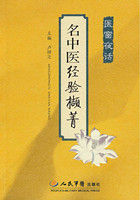Not to be outdone by its cousins the heliotrope and the forget-me-not, this lovely and far more showy spring flower has found its way into the rockwork and sheltered, moist nooks of many gardens, especially in England, where Mr.W.Robinson, who has appealed for its wider cultivation in that perennially charming book, "The English Flower Garden," says of the Mertensias: "There is something about them more beautiful in form of foliage and stem, and in the graceful way in which they rise to panicles of blue, than in almost any other family....
Handsomest of all is the Virginia cowslip." And yet Robinson never saw the alluvial meadows in the Ohio Valley blued with lovely masses of the plant in April.
A great variety of insects visit this blossom, which, being tubular, conducts them straight to the ample feast; but not until they have deposited some pollen brought from another flower on the stigma in their way.The anthers are too widely separated from the stigma to make self-fertilization likely.Occasionally one finds the cowslips perforated by clever bumblebees.As only the females, which are able to sip far deeper cups, are flying when they bloom, they must be either too mischievous or too lazy to drain them in the legitimate manner.Butterflies have only to stand on a flower, not to enter it, in order to sip nectar from the four glands that secrete it abundantly.
FORGET-ME-NOT; MOUSE-EAR; SCORPION GRASS; SNAKE GRASS; LOVE ME(Myosotis Palustris) Borage family Flowers - Pure blue, pinkish, or white, with yellow eye; flat, 5-lobed, borne in many-flowered, long, often 1-sided racemes.
Calyx 5-cleft; the lobes narrow, spreading, erect, and open in fruit; 5 stamens inserted on corolla tube; style threadlike;ovary 4-celled.Stem: Low, branching, leafy, slender, hairy, partially reclining.Leaves: (Myosotis = mouse-ear) oblong, alternate, seated on stem, hairy.Fruit: Nutlets, angled and keeled on inner side.
Preferred Habitat - Escaped from gardens to brooksides, marshes, and low meadows.
Flowering Season - May-July.
Distribution - Native of Europe and Asia, now rapidly spreading from Nova Scotia southward to New Jersey, Pennsylvania, and beyond.
How rare a color blue must have been originally among our flora is evident from the majority of blue and purple flowers that, although now abundant here and so perfectly at home, are really quite recent immigrants from Europe and Asia.But our dryer, hotter climate never brings to the perfection attained in England "The sweet forget-me-nots That grow for happy lovers."Tennyson thus ignores the melancholy association of the flower in the popular legend which tells how a lover, when trying to gather some of these blossoms for his sweetheart, fell into a deep pool, and threw a bunch on the bank, calling out, as he sank forever from her sight, "Forget me not." Another dismal myth sends its hero forth seeking hidden treasure caves in a mountain, under the guidance of a fairy.He fills his pockets with gold, but not heeding the fairy's warning to "forget not the best" - i.e., the myosotis - he is crushed by the closing together of the mountain.
Happiest of all is the folk-tale of the Persians; as told by their poet Shiraz: "It was in the golden morning of the early world, when an angel sat weeping outside the closed gates of Paradise.He had fallen from his high estate through loving a daughter of earth, nor was he permitted to enter again until she whom he loved had planted the flowers of the forget-me-not in every corner of the world.He returned to earth and assisted her, and together they went hand in hand.When their task was ended, they entered Paradise together, for the fair woman, without tasting the bitterness of death, became immortal like the angel whose love her beauty had won when she sat by the river twining forget-me-nots in her hair."It was the golden ring around the forget-me-not's center that first led Sprengel to believe the conspicuous markings at the entrance of many flowers served as pathfinders to insects.This golden circle also shelters the nectar from rain, and indicates to the fly or bee just where it must probe between stigma and anthers to touch them with opposite sides of its tongue.Since it may probe from any point of the circle, it is quite likely that the side of the tongue that touched a pollen-laden anther in one flower will touch the stigma in the next one visited, and so cross-fertilize it.But forget-me-nots are not wholly dependent on insects.When these fail, a fully mature flower is still able to set fertile seed by shedding its own pollen directly on the stigma.
The SMALLER FORGET-ME-NOT (M.laxa), formerly accounted a mere variety of palustris, but now defined as a distinct species, is a native, and therefore may serve to show how its European relative here will deteriorate in the dryer atmosphere of the New World.
Its tiny turquoise flowers, borne on long stems from a very loose raceme, gleam above wet, muddy places from Newfoundland and Eastern Canada to Virginia and Tennessee.
Even smaller still are the blue or white flowers of the FIELDFORGET-ME-NOT, SCORPION GRASS, or MOUSE-EAR (M.arvenis), whose stems and leaves are covered with bristly hairs.It blooms from August to July in dry places, even on hillsides, an unusual locality in which to find a member of this moisture-loving clan.
All the flowers remain long in bloom, continually forming new buds on a lengthening stem, and leaving behind little empty green calices.
VIPER'S BUGLOSS; BLUE-WEED; VIPER'S HERB or GRASS; SNAKE-FLOWER;BLUE-THISTLE















